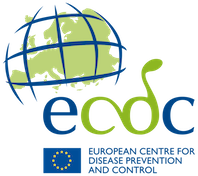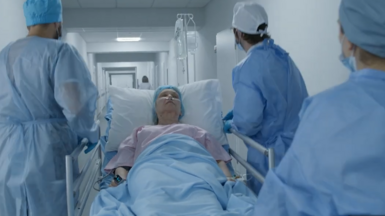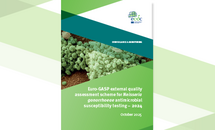Euro-GASP external quality assessment scheme for Neisseria gonorrhoeae antimicrobial susceptibility testing - 2024
External quality assessment (EQA) is an essential part of any laboratory-based surveillance system, allowing for the monitoring of performance and comparability of results from participating laboratories, identification of potential issues and deployment of resources and training where necessary. An EQA scheme for antimicrobial susceptibility testing in Neisseria gonorrhoeae has been available to laboratories participating in ECDC’s European Sexually Transmitted Infections (STI) surveillance network since 2010. This EQA scheme has so far shown high levels of inter-laboratory comparability in the presence of differing methodologies.
Executive summary
Materials and methods
The EQA specimen panel of 10 gonococcal isolates was selected by the United Kingdom Health Security Agency (UKHSA) and Örebro University Hospital (ÖUH) and was distributed by the United Kingdom National External Quality Assessment Service (UK NEQAS). Of the 10 gonococcal isolates provided, one strain was in triplicate and two strains were in duplicate to test intra-laboratory concordance. The remaining isolates were provided singly, such that the N. gonorrhoeae antimicrobial susceptibility EQA panel comprised six different strains. The strains were representative of a range of different antimicrobial susceptibility profiles and consisted of five WHO reference strains (WHO H, M, O, Q, and S2) and one clinical strain isolated in the UK in 2023.
Laboratories were requested to test the EQA panel using own routine (i.e. minimum inhibitory concentration (MIC) gradient strip test or agar dilution) and relevant breakpoints (i.e. EUCAST, CLSI, etc.). Antimicrobial agents tested included azithromycin, cefixime, ceftriaxone, ciprofloxacin, gentamicin, spectinomycin, and tetracycline. Strains were also tested for beta-lactamase production. Results were submitted directly to UK NEQAS, who issued individual laboratory reports. The raw results were supplied to UKHSA, who decoded and analysed the results. Antimicrobial susceptibility category concordance (categorical agreement) was assessed using the consensus category (most often reported category) of susceptibility for each tested strain. MIC concordance was assessed by examining MIC results within one (essential agreement) and two doubling dilutions of the modal MIC. Intralaboratory concordance was examined using the triplicate and the two duplicate strains.
Results
In October 2024, the EQA panel was dispatched to 28 laboratories in 28 European Union/European Economic Area (EU/EEA) countries, 27 (96.4%) of which returned results to UK NEQAS. All laboratories used MIC gradient strip tests for one or more antimicrobials, and all stated that they used EUCAST breakpoints.
Categorical agreement ranged from 94.4% (azithromycin) to 100% (cefixime and spectinomycin). Compared to the 2023 EQA, categorical agreement increased for all antimicrobials except ciprofloxacin and for beta-lactamase detection. Most susceptibility category discrepancies were in strains with MICs close to a resistance breakpoint. Overall, 93.3% and 98.4% of MICs were within one (essential agreement) and two doubling dilutions of the modal MIC, respectively, corresponding to an increase in essential agreement (89.1% in 2023, p<0.0001). Essential agreement for individual antimicrobials ranged from 87.2% (spectinomycin) to 99.5% (cefixime). With respect to changes in essential agreement for individual antimicrobials between 2023 and 2024, only tetracycline reached statistical significance (84.8% in 2023 and 92.1% in 2024, p=0.02).
At the individual laboratory level, inter-laboratory categorical concordance increased slightly from 98.7% in 2023 to 99.2% in 2024. The same was true for inter-laboratory MIC concordance (87.9% in 2023 to 90.8% in 2024); however, four laboratories reported >5% of MIC results greater than two doubling dilutions from the modal MIC. Intra-laboratory MIC concordance decreased slightly, although the score remained high overall (97.1% in 2023 to 96.2% in 2024).
Discussion and conclusion
Antimicrobial susceptibility testing methods and breakpoints have largely been harmonised across laboratories participating in the 2024 European Gonococcal Antimicrobial Surveillance Programme (Euro-GASP) EQA. Laboratories generally performed well, demonstrating good levels of competency in testing N. gonorrhoeae isolates of unknown phenotype. Categorical agreement increased in 2024, with the 90% minimum exceeded for all agents tested. MIC essential agreement also increased, with the 90% minimum exceeded for all antimicrobials except azithromycin and spectinomycin. Inter- and intra-laboratory concordance scores were high for most laboratories, providing confidence in the use of decentralised testing in Euro-GASP. Four laboratories will be supported in working to achieve the Euro-GASP recommended target of 95% of MICs within two doubling dilutions of the modal MIC.








